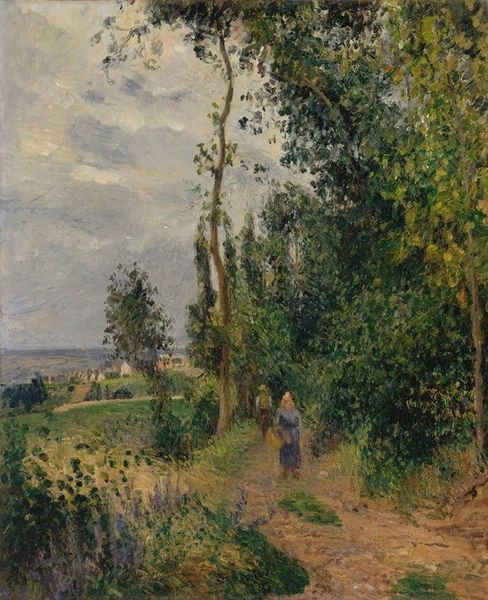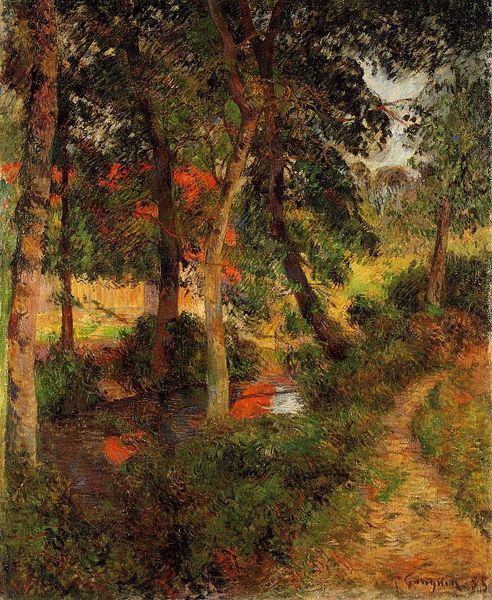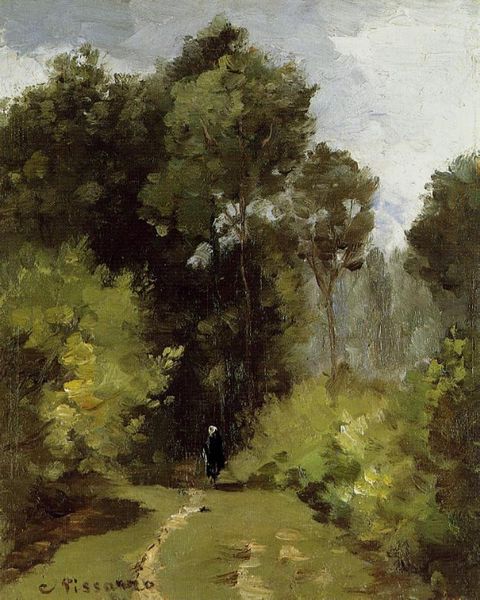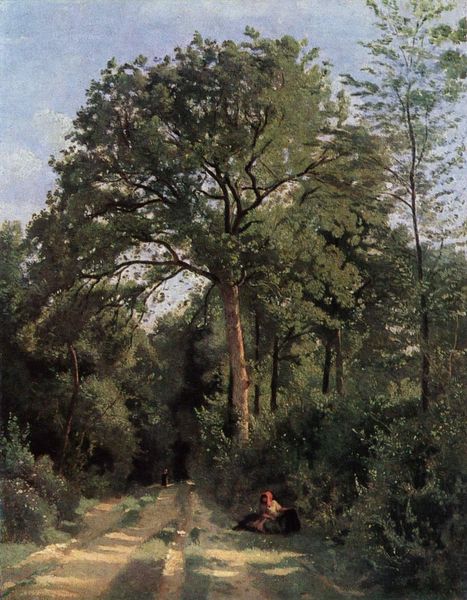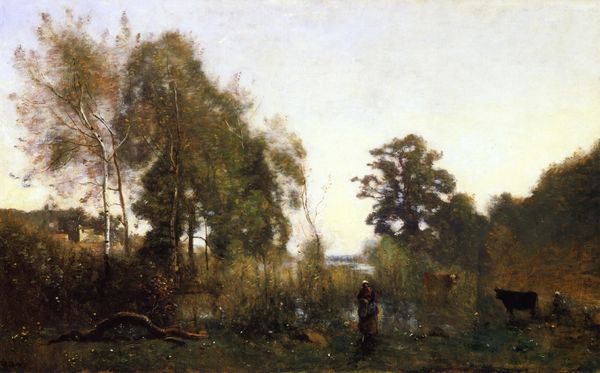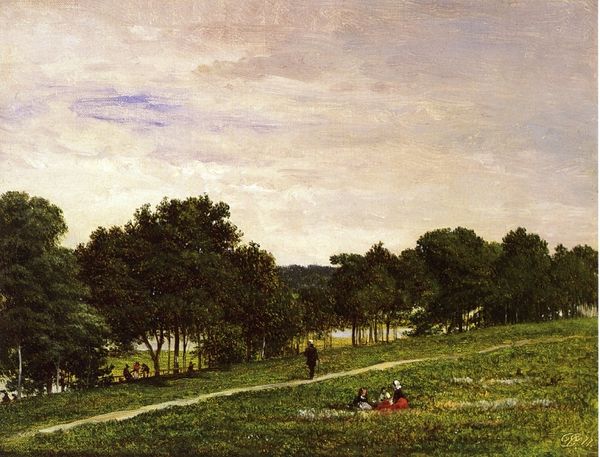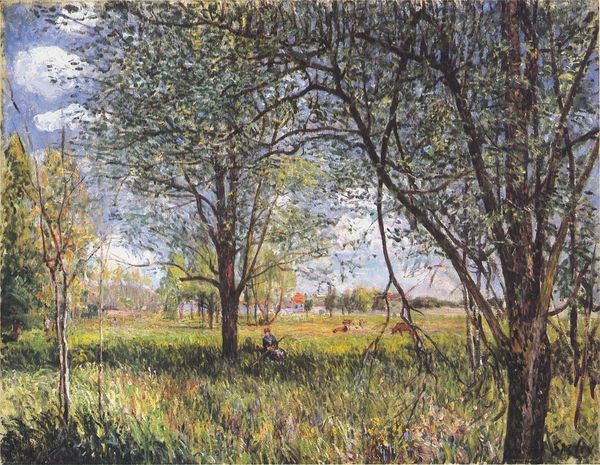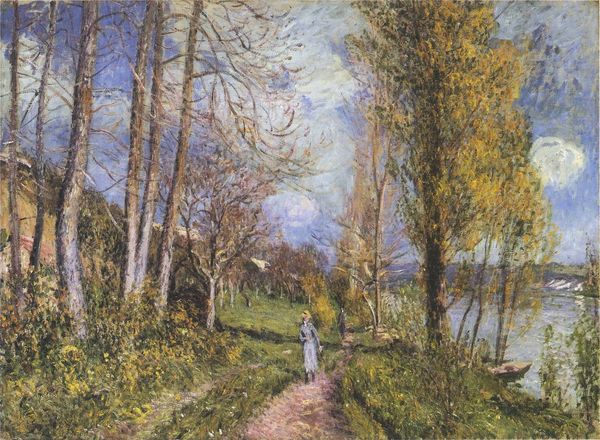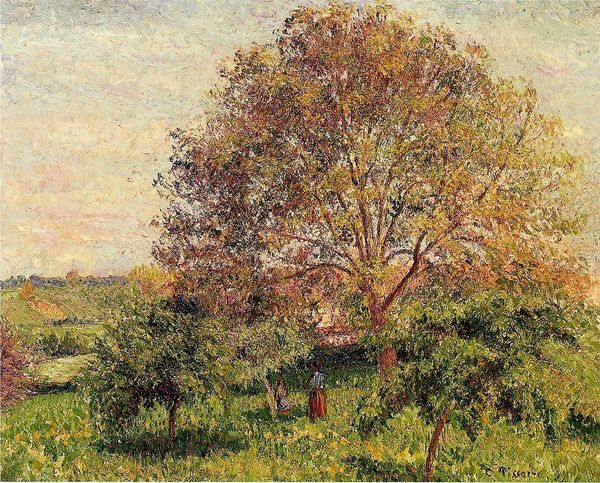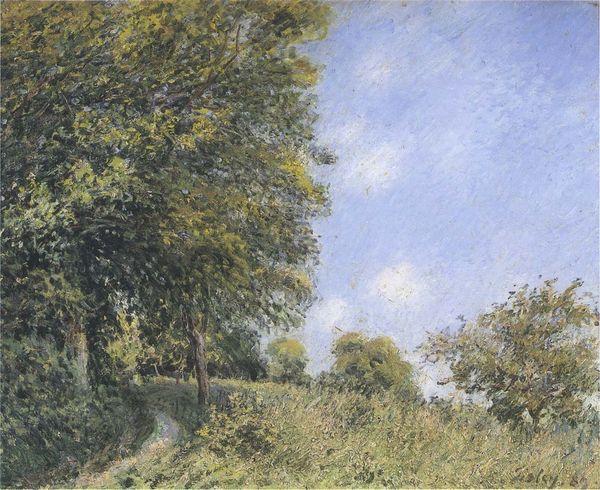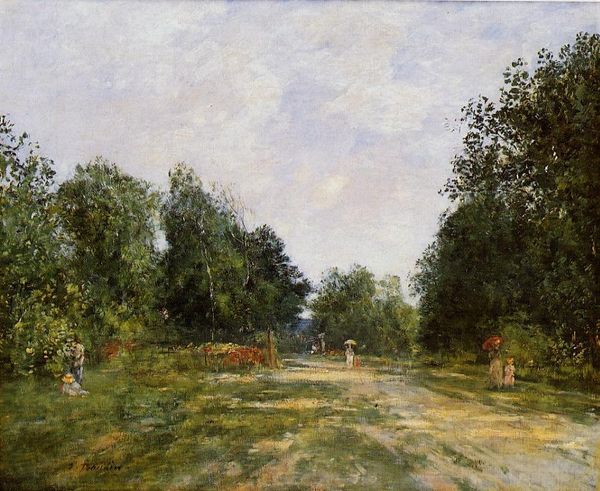
#
tree
#
sky
#
abstract painting
#
landscape
#
impressionist landscape
#
possibly oil pastel
#
nature
#
oil painting
#
fluid art
#
acrylic on canvas
#
plant
#
naturalistic tone
#
seascape
#
natural-landscape
#
men
#
nature
#
watercolor
Copyright: Public domain
Editor: Today we are looking at Camille Pissarro's "Resting in the woods Pontoise," painted in 1878. It strikes me how the loose brushstrokes create a sense of shimmering light, but the composition is also quite structured with those vertical trees framing the scene. What do you see in this piece from a formalist perspective? Curator: The formal strength resides, as you note, in the tension between its seeming spontaneity and underlying architecture. Observe the calculated placement of the tree trunks: they establish a vertical rhythm, echoed by the slender figures resting beneath. This rhythm is counterpointed by the horizontal expanse of the fields in the distance. Editor: So it's the interplay of verticals and horizontals that gives the painting its structure? Curator: Precisely. And consider the use of color. Note how Pissarro uses broken color, small touches of pure pigment laid side-by-side, not mixed on the palette, to create the impression of light and shadow. This is quintessential Impressionist technique. Are there other formal aspects that capture your attention? Editor: I notice the texture – it looks quite thick in places. Curator: Yes, the impasto is significant. Pissarro's build-up of paint isn’t merely representational; the very substance of the paint contributes to the painting's meaning. The tactile quality invites the viewer to consider the physical act of painting itself. Editor: So, rather than just representing a scene, the painting draws attention to its own making. Curator: Exactly. It's a painting about painting, a formal arrangement of color, line, and texture designed to stimulate aesthetic response. We begin to grasp not only the look of the landscape, but Pissarro's careful consideration of pictorial structure. Editor: This has made me think about the painting as a constructed object, rather than just a window onto a scene. Curator: Indeed, and understanding that shift is key to appreciating the innovations of Impressionism.
Comments
No comments
Be the first to comment and join the conversation on the ultimate creative platform.
